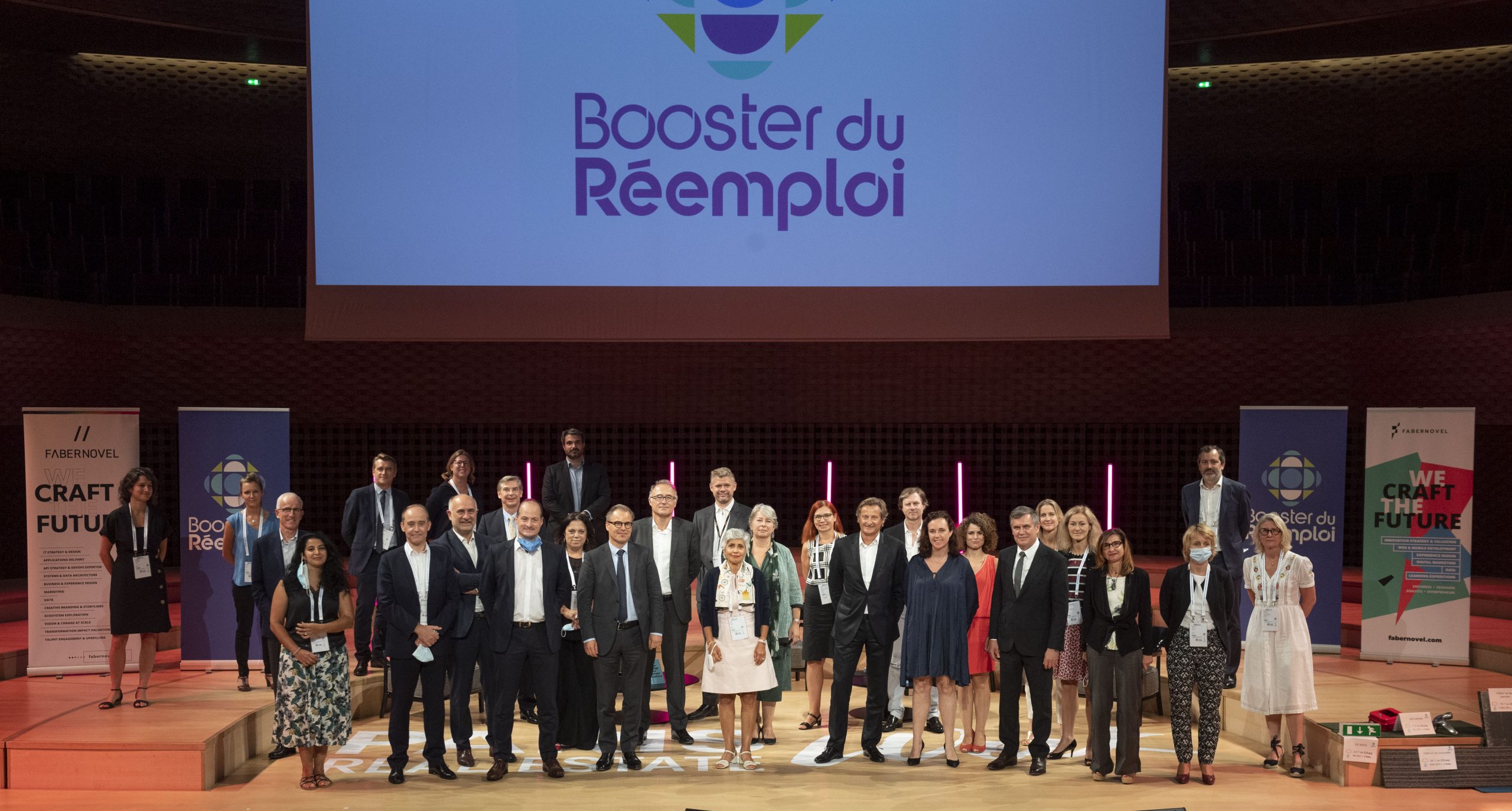LAUNCH OF THE RE-USE BOOSTER AT THE MIPIM
Low carbon: about 30 contracting authorities have begun 150 work sites as part of the biggest collective initiative to promote the re-use of materials.
More than 30 major contracting authorities are launching the “Re-use Booster”, an alliance on an unprecedented scale promoting the re-use of materials in the construction sector. The initiative, whose members are expected to grow rapidly in number, is composed of investors (Agrica, Colliers, Covéa Immobilier, Gecina, Groupama Immobilier, Icade, etc.), developers (Adim, Altarea, BNP Paribas Real Estate, Bouygues Immobilier, Ceetrus, Crédit Agricole Immobilier, Kaufman & Broad, Spie Batignolles Immobilier, etc.) as well as major users, which place orders for many projects (Engie, Orange, etc.) Significant progress is also being made with certain public contractors (Ville de Paris, regions).
The signatories will initiate 150 projects (5 per year each) to order re-use materials from old deconstructed buildings. Some of the first projects are: #Community (Bordeaux); Z5C (Saint Denis); 43-45 avenue d’Iéna (Paris); 92 Wagram (Paris); Ulteam (Paris); WP4 (Nanterre), etc. (see end of press release).
An online platform designed by Fabernovel will centralise and standardise the needs for re-used materials that suppliers currently find hard to identify: raised flooring, false ceilings, doors, lighting, carpets, metalwork, partitions, furniture, joinery, plumbing, etc.
The Re-use booster will support each project, making the process easier. This will include recruiting stakeholders in the re-use of materials (project management assistance, project managers, architects, businesses, consultants, control offices, engineering firms, etc.)
By structuring the demand, which is currently hesitant and fragmented, the “Re-use Booster” is confident in its ability to boost the re-use of materials, which currently represents less than 1% of the materials used in construction. This demand will be necessary to achieve the various objectives of the national low carbon strategy.
The “Booster” method involves hiring a pilot group of pioneering companies that are committed to taking direct action on their own projects, giving them the support they need to create systems and standards, and encouraging the market to join in, creating a virtuous circle. It is managed by A4MT (Action for Market Transformation) and the IFPEB, which has successfully applied it over the last five years to help commercial property achieve the energy savings required by the ELAN law (- 40% by 2030), among other projects.
The “Booster” has set itself a target of three years in which to transform the way of prescribing and deciding on the re-use of materials in works contracts. This will require working in collaboration with the “team members” and “creators” of the projects: architects, designers, design offices, control offices, technical managers, businesses and industrialists.
Background and figures
The construction sector produces 42 million tonnes of waste per year, less than 1% of which is re-used.
The construction industry produces 42 million tonnes of waste and rubble from demolition or deconstruction works each year, i.e. three times more than household waste. While an increasing proportion of this waste is recycled, less than 1% is “re-used”, i.e. for re-use with little or no transformation. However, a very large number of materials can be re-used following deconstruction, for all types of works.
The re-use of materials significantly improves environmental performance
The use of materials from deconstructed buildings, without transforming them – or very little – has a very clear impact on the environmental performance of buildings. For 1,000 m² of surface area, re-use saves 44 tonnes of waste and 67 tonnes of CO2 equivalent (and more than 1 million litres of water). Such results fall within the objectives of the National Low Carbon Strategy.
Analysis: while the supply of re-usable materials is well organised… the demand is not.
On the supply side, many cleansers and demolition/deconstruction companies already sell materials on re-use platforms. It is on the demand side that there is a bottleneck: the option to re-use materials is very seldom taken into consideration upstream, and project managers often do not have the flexibility or the resources to then replace new materials with re-used materials and insurance companies do not know how to take this into account.
If the new law on the circular economy (February 2020) requires public procurement to “consider re-used materials”, this requirement is not yet in operation and there are not yet any plans to make this an obligation for the private sector.
The idea of the “Re-use Booster”: consolidate demand and create a threshold effect.
To remove these obstacles, around 30 major contracting authorities have decided to take action collectively, so that the demand can be clearly understood and predicted.
Each member of the “Booster” must indeed immediately undertake several projects in the initiative, thereby gathering together the demand for re-used materials and making it visible on a platform that has been specially developed by Fabernovel. This will consolidate the needs (type, location, delivery deadline, etc.)
Access the press release here

